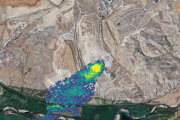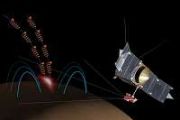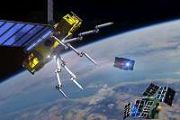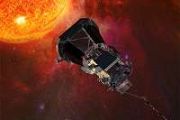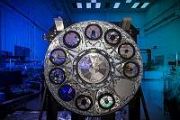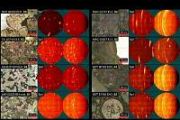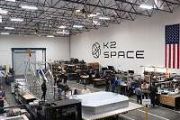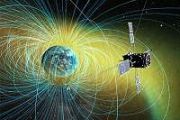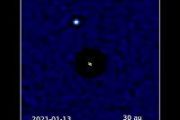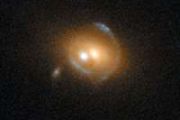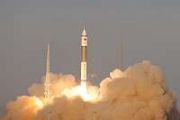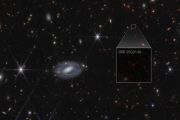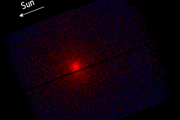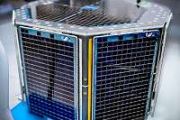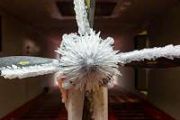
Copernical Team
Inflatable fuel tank offers extra space for space
 Image:
Inflatable fuel tank offers extra space for space
Image:
Inflatable fuel tank offers extra space for space Spire Global awarded NOAA contract for satellite weather data
 Spire Global, Inc. (NYSE: SPIR) has been awarded an Indefinite Delivery Indefinite Quantity (IDIQ) contract by the National Oceanic and Atmospheric Administration (NOAA) to compete for orders under a $59 million ceiling. The award is part of NOAA's Commercial Weather Data Program's Radio Occultation Data Buy II. The contract commenced on March 27, 2023 and will run until March 26, 2028.
Sp
Spire Global, Inc. (NYSE: SPIR) has been awarded an Indefinite Delivery Indefinite Quantity (IDIQ) contract by the National Oceanic and Atmospheric Administration (NOAA) to compete for orders under a $59 million ceiling. The award is part of NOAA's Commercial Weather Data Program's Radio Occultation Data Buy II. The contract commenced on March 27, 2023 and will run until March 26, 2028.
Sp Kendall, Brown, Saltzman tell lawmakers 'on-time' budget needed to meet security challenges, transform Air and Space Forces
 Delivering a unified and unambiguous message, the Department of the Air Force's highest-ranking civilian and military leaders told Congress March 28 that progress is being made modernizing the Air and Space Forces, but to fully succeed Congress must pass the budget on-time so critical "transformation" is not delayed.
To properly modernize and transform both the Air Force and Space Force to
Delivering a unified and unambiguous message, the Department of the Air Force's highest-ranking civilian and military leaders told Congress March 28 that progress is being made modernizing the Air and Space Forces, but to fully succeed Congress must pass the budget on-time so critical "transformation" is not delayed.
To properly modernize and transform both the Air Force and Space Force to Globalstar announces $200M non-convertible financing to satisfy remaining capital needs
 Globalstar, Inc. (NYSE American: GSAT) has entered into a purchase agreement with an affiliate of Varde Partners and others providing for the sale of $200 million in aggregate principal amount of 13% Senior Notes due 2029. This transaction is expected to close on or around March 31, 2023. The notes are non-convertible and therefore do not result in equity dilution. Goldman Sachs and Co. LLC acte
Globalstar, Inc. (NYSE American: GSAT) has entered into a purchase agreement with an affiliate of Varde Partners and others providing for the sale of $200 million in aggregate principal amount of 13% Senior Notes due 2029. This transaction is expected to close on or around March 31, 2023. The notes are non-convertible and therefore do not result in equity dilution. Goldman Sachs and Co. LLC acte Satellite firm SES says exploring merger with Intelsat
 European satellite telecommunications provider SES said Wednesday it is exploring a possible merger with US rival Intelsat in what would be another tie-up in the sector as the race for space-based internet service heats up.
"In response to rumours in the market, SES S.A. confirms that the company has engaged in discussions regarding a possible combination with Intelsat."
The firm added t
European satellite telecommunications provider SES said Wednesday it is exploring a possible merger with US rival Intelsat in what would be another tie-up in the sector as the race for space-based internet service heats up.
"In response to rumours in the market, SES S.A. confirms that the company has engaged in discussions regarding a possible combination with Intelsat."
The firm added t WVU researchers explore alternative sources to help power space
 Satellites and spacecraft are running on empty due to a worldwide shortage of traditional propulsion fuels. In response, two West Virginia University researchers are seeking alternative ways of powering the thrusters that keep satellites in orbit and could potentially drive deep space vessels.
Earl Scime, Oleg D. Jefimenko professor of physics and astronomy, and Thomas Steinberger, researc
Satellites and spacecraft are running on empty due to a worldwide shortage of traditional propulsion fuels. In response, two West Virginia University researchers are seeking alternative ways of powering the thrusters that keep satellites in orbit and could potentially drive deep space vessels.
Earl Scime, Oleg D. Jefimenko professor of physics and astronomy, and Thomas Steinberger, researc The water storage capacity of the whole moon can reach 270 billion tons
 On March 27, an article published in the international academic journal "Nature Earth Science" stated that Chinese and British scholars measured the water in the impact glass beads in the Chang'e-5 lunar samples, and found that the water content in the glass beads decreased from the edges taper off towards the center. The scientific research team speculates that this is because the hydrogen ions
On March 27, an article published in the international academic journal "Nature Earth Science" stated that Chinese and British scholars measured the water in the impact glass beads in the Chang'e-5 lunar samples, and found that the water content in the glass beads decreased from the edges taper off towards the center. The scientific research team speculates that this is because the hydrogen ions Tiptoeing through the tricky terrain: Sol 3785
 Signs of spring are all around as most of us come on shift from various locations within the northern hemisphere today. We still have thick snow on the ground here in eastern Canada, but the sounds of melting snow and bird song are all around.
Meanwhile on Mars, we may not be tiptoeing through the tulips, but we are certainly, very carefully, tiptoeing our way through the many loose blocks
Signs of spring are all around as most of us come on shift from various locations within the northern hemisphere today. We still have thick snow on the ground here in eastern Canada, but the sounds of melting snow and bird song are all around.
Meanwhile on Mars, we may not be tiptoeing through the tulips, but we are certainly, very carefully, tiptoeing our way through the many loose blocks New Program Office leads NASA's path forward for Moon, Mars
 NASA has established the new Moon to Mars Program Office at NASA Headquarters in Washington to carry out the agency's human exploration activities at the Moon and Mars for the benefit of humanity. Amit Kshatriya will serve as the agency's first head of the office, effective immediately. This new office resides within the Exploration Systems Development Mission Directorate, reporting to its Assoc
NASA has established the new Moon to Mars Program Office at NASA Headquarters in Washington to carry out the agency's human exploration activities at the Moon and Mars for the benefit of humanity. Amit Kshatriya will serve as the agency's first head of the office, effective immediately. This new office resides within the Exploration Systems Development Mission Directorate, reporting to its Assoc A tour of Jezero Crater
 The film we are presenting as a special edition of our 'Mars image of the month' series offers a virtual flight over the Jezero impact crater and its surroundings, the landing site of NASA's Perseverance rover. It was created using an image mosaic consisting of several separate images, which was based on observations made by DLR's High Resolution Stereo Camera (HRSC) on board ESA's Mars Express
The film we are presenting as a special edition of our 'Mars image of the month' series offers a virtual flight over the Jezero impact crater and its surroundings, the landing site of NASA's Perseverance rover. It was created using an image mosaic consisting of several separate images, which was based on observations made by DLR's High Resolution Stereo Camera (HRSC) on board ESA's Mars Express 

